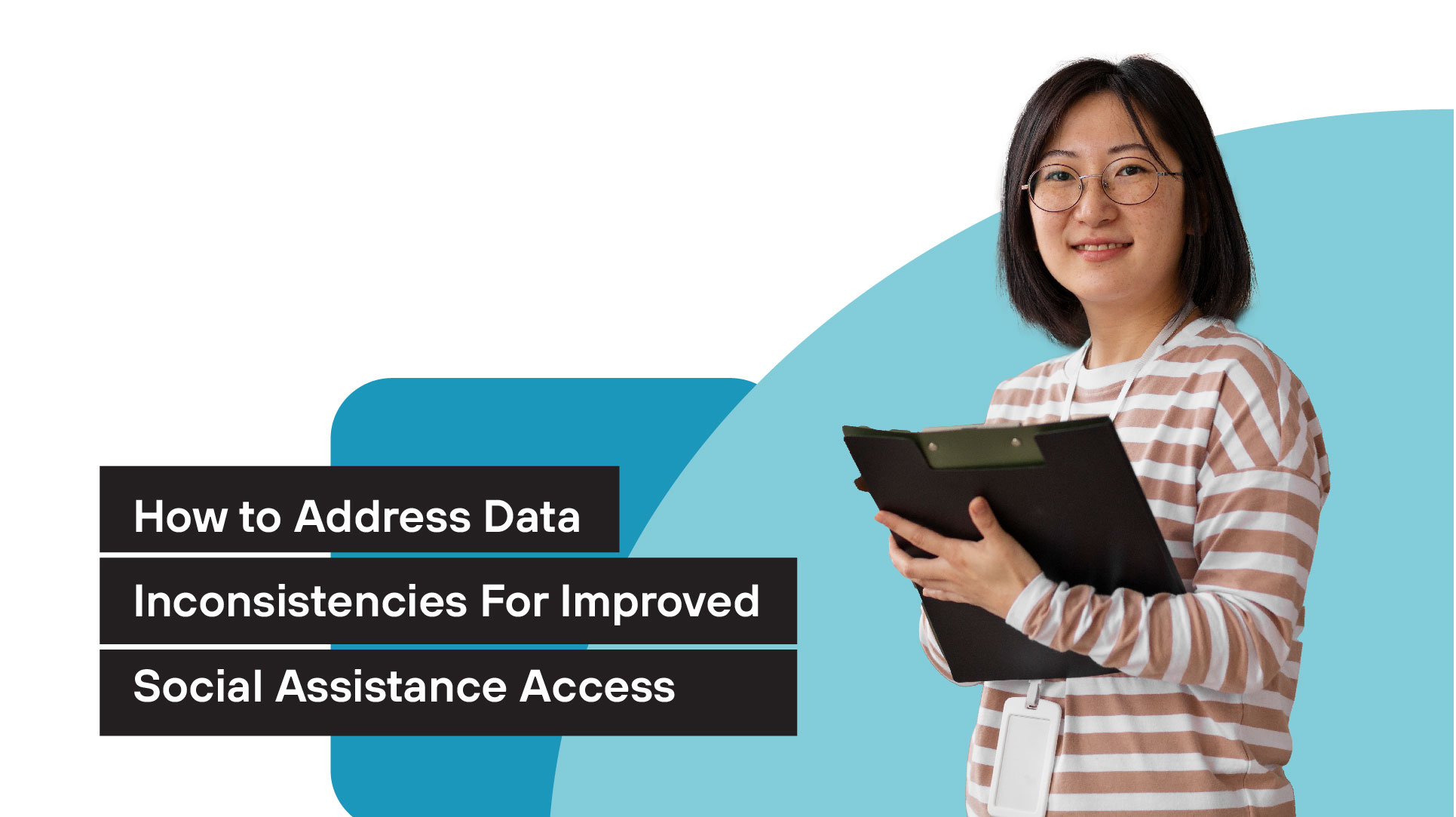How to address data inconsistencies for improved social assistance access


In a world that's increasingly data-driven, efficient, and equitable social assistance programs hinge on one critical factor: accurate, consistent data. Unfortunately, data inconsistencies often lurk in the background, acting as silent barriers to accessing essential services. Whether you're an advocate for social change, part of a government agency, or a nonprofit organization, addressing data inconsistencies is essential for improving social assistance access.
In this blog post, we will explore the intricacies of data inconsistencies, their impact on social assistance, and actionable strategies and steps to enhance data quality for more equitable access to vital resources for improved social assistance.
Social assistance encompasses a range of programs and services designed to support individuals and families facing financial hardship, unemployment, healthcare needs, and educational disparities. These programs are lifelines for countless individuals, providing much-needed assistance to improve their quality of life.
Data is not just an abstract concept; it's the heartbeat of social assistance programs. It drives every decision, policy, and resource allocation. The accuracy and consistency of this data directly impact the effectiveness of these programs, determining who receives assistance and who may be left behind.
Behind every statistic is a real person or family in need. Data inconsistencies can lead to heartbreaking stories of individuals being denied access to crucial resources due to inaccuracies in their records. These stories emphasize the urgency of addressing data inconsistencies.

Data inconsistencies are deviations from an expected standard in the data we collect. These deviations can manifest in various ways: missing information, duplicated records, outdated data, or discrepancies in formats. Understanding these variations is essential to tackling them effectively.
Data inconsistencies originate from multiple sources, including human errors in manual data entry, outdated systems, and a lack of robust data governance. Identifying the sources is the first step toward resolving the issues.
The consequences of data inconsistencies ripple through the system, leading to misguided policies, misallocation of budgets, and inefficient resource distribution. These problems can have a profound impact on vulnerable populations.
Data inconsistencies act as roadblocks to innovation. By impeding the development of efficient solutions, they perpetuate the cycle of inefficiency in social assistance programs. For instance, a lack of consistent data might prevent the development of an efficient mobile app that could simplify the application process for social assistance programs.
Rectifying data inconsistencies is not only time-consuming but also expensive. When inconsistencies arise, scarce resources that could have been used to directly assist individuals are diverted to cleaning and correcting data errors, creating unnecessary financial burdens and delays.
Beneficiaries often find themselves frustrated by the complexities of navigating systems plagued by data inconsistencies. They are forced to jump through unnecessary hoops, delaying the support they desperately need, and, in some cases, abandonment of the assistance-seeking process.
Regular data audits are essential to pinpoint inconsistencies and their sources. These audits involve a systematic review of existing data to identify inaccuracies. Consider the example of a government agency that conducts regular data audits and discovers that the same individual is listed twice in their system, potentially receiving double benefits. This audit helps identify and resolve inconsistencies. This process should be conducted regularly to maintain data consistency.
Practical Steps:
Establishing data quality metrics and benchmarks is crucial. This provides a clear picture of your data's health. It provides a framework for measuring the consistency and accuracy of data over time. Organizations that define what constitutes "clean" data and set benchmarks for data accuracy have a clear standard against which to measure and correct data when inconsistencies arise.
Practical Steps:
Leveraging data analytics tools and techniques can help uncover subtle inconsistencies that might go unnoticed with manual methods. For instance, machine learning algorithms can detect patterns and anomalies in large datasets, uncovering hidden inconsistencies that may elude manual review.
Practical Steps:
.png)
Standardizing data formats and definitions can prevent inconsistencies from arising in the first place. This approach sets a clear standard for data entry and storage. For instance, you can ensure that income figures are consistently reported in the same format and currency such that $50,000 and 50,000 dollars are treated the same, reducing errors caused by inconsistent formatting.
Practical Steps:
Implementing robust data governance practices is critical to maintaining data consistency. This includes creating data governance policies, including data entry protocols, data cleaning procedures, and oversight mechanisms. By setting clear data entry guidelines and conducting periodic audits, you can identify and rectify inconsistencies caused by human errors.
Practical Steps:
Automation tools such as AI to process incoming data, can significantly reduce human errors in data entry and processing, thereby enhancing data quality and consistency. This ensures that the data entered is consistently accurate. You can explore automation solutions to minimize human errors. For example, using optical character recognition (OCR) can significantly reduce manual data entry errors by automating the process of data extraction from documents accurately
Practical Steps:
In conclusion, this guide has provided a detailed roadmap for identifying and addressing data inconsistencies in social assistance programs. The human impact of these inconsistencies underscores the urgency of our mission. By implementing these practical strategies for identifying and mitigating data inconsistencies, you can significantly improve the quality of data in your social assistance programs. This, in turn, will enhance decision-making, reduce resource wastage, and ensure that those in need receive the support they deserve. Remember that data consistency is an ongoing effort, so continuous monitoring and improvement are critical to long-term success. Together, we can make a profound difference in the lives of countless individuals and families who depend on these vital services.